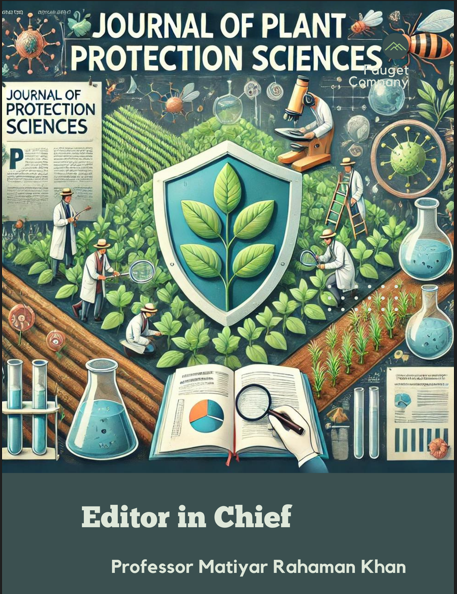Relative efficacy of some insecticides for the control of tea mos quito bug, Helopeltis theivora (Waterhouse) in Bangladesh
DOI:
https://doi.org/10.48165/Keywords:
Quinalphos+Cypermethrin, pesticidesAbstract
Tea mosquito bug, Helopeltis theivora Water house (Hemiptera: Miridae) is one of the most serious pests of tea in Bangladesh. It is also widely distributed in India, Sri Lanka, Viet nam, Indonesia, Malaysia and Africa. It is also a phytophagous pest of coffee, cocoa, cashew etc. A group of genomes are treated as a mosquito bug. This bug bears no relation to mosquito and the name ‘Tea Mosquito Bug’ is simply a misnomer. It is considered as one of the major pests of Bangladesh tea because it attacks only to the young shoots that are the actual crop of tea. Ahmed (2) reported that 10 -15% of tea crop is lost annually by Helopeltis which sometimes may go up to 100% crop loss. Both the nymphs and adults damage the plant by sucking sap from young leaves, buds and tender stems. Due to intensive feeding by nymphs and adults, leaves curl up and are badly deformed. In addition to direct crop loss, damage by Helopeltis leads to debilita tion of bushes resulting in die-back with crows-feet and delayed or meager flushing thereafter consequently almost the entire crop is lost. Mamun (6) described that many differ ent tactics are used in IPM strategy for tea mosquito bug in tea plantation, including cul tural practices, biological control agents, pest resistant varieties, physical barriers and chemical pesticides etc. Yet chemical insecti cides have remained as the most powerful tools for controlling this pest in Bangladesh. From the above point of view, efforts were made to evaluate the relative efficacy and eco nomic analysis of some insecticides to find out suitable substitute for efficient control of tea mosquito bug in Bangladesh tea.
References
1. Ahmed M Paul SK Mamun MSA. 2011 Field per formance and economic analysis of some commonly used insecticides against tea mos quito bug, Helopeltis theivora W. Bangladesh Journal of Agricultural Research 36(3):449-542. Ahmed M. 2005 Tea Pest Management. Evergreen Printing and Packaging, Dhaka, 118p.
3. Henderson CF Tilton EW. 1955 Tests with acari cides against brown wheat mite. Journal of Economic Entomology 48:157- 61.
4. Mamun MSA Ahmed M. 2011 Integrated pest management in tea: prospects and future strategies in Bangladesh. Journal of Plant Protection Sciences 3(2): 1-13.
5. Mamun MSA Ahmed M. 2012 Approved insecti cides, miticides and nematicides for tea (Revised & Updated). BTRI Circular no. 135, Bangladesh Tea Research Institute, Srimangal, Moulvibazar, pp. 1-7.
6. Mamun MSA. 2011 Development of integrated pest management strategy for tea mosquito bug (Helopeltis theivora Waterhouse) in Bangladesh. Journal of Subtropical Agricul tural Research & Development 9(1): 867-73.
7. Perrin RK Winkelman DL Moscardi ER Anderson JR. 1988 From Agronomic Data to Farmer Recommendations: An Economic Training Manual. International Maize and Wheat Im provement Center (CIMMYT), Mexico.

